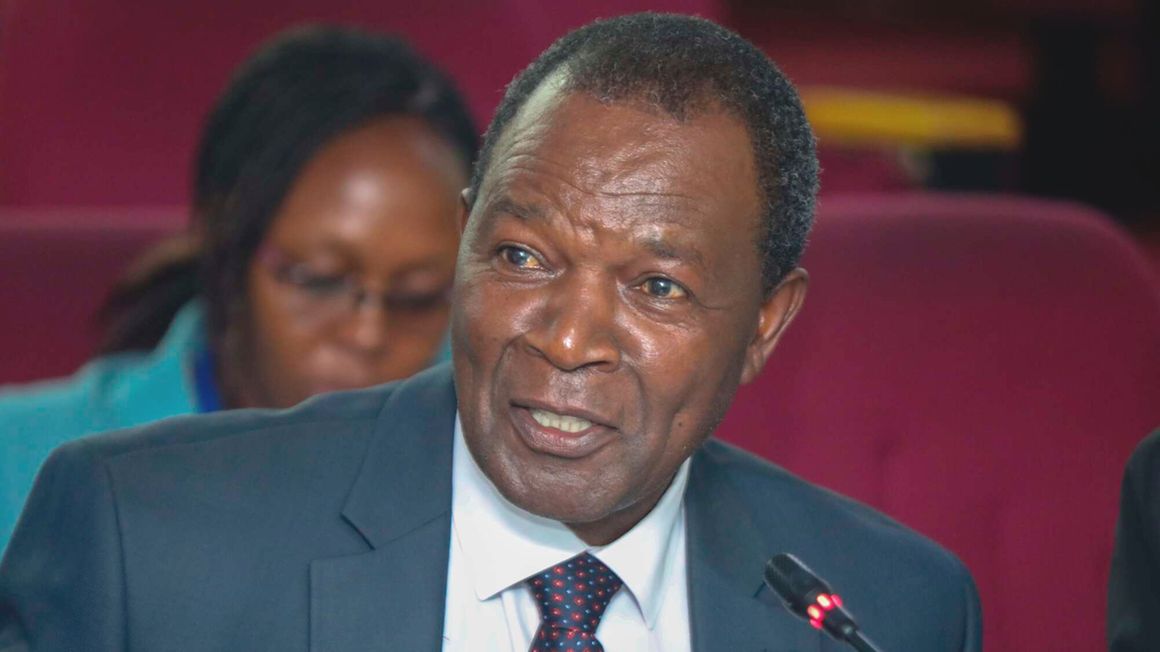
Cabinet Secretary for National Treasury and Economic Planning Prof Njuguna Ndung'u before the Committee on County Public Investments and Special Funds at KICC, Nairobi on April 24, 2023. PHOTO | DENNIS ONSONGO | NMG
Last week, the World Bank Group approved the disbursement of Sh138.6 billion ($1 billion) under its development policy operations a week after the International
Monetary Fund (IMF) staff reached an agreement that will see the wiring of Sh56.8 billion ($410 million) to Nairobi.The World Bank facility is the fifth such instalment in as many years while the IMF disbursement is part of a wider Sh487.9 billion ($3.52 billion) multi-year programme that has since been extended by 10 months to April 2025.
The extended arrangement covers a new 20-month-long resilience and sustainability facility arrangement which lifted the size of IMF support from Sh324.3 billion (2.34 billion) during the approval of the arrangement in April 2021.
To secure the Sh138.6 billion World Bank facility, the Treasury listed the following actions.
Higher electricity tariffs
In disclosures, the Treasury said the Energy and Petroleum Regulatory Authority issued new electricity tariffs which cover the next three years to ensure that Kenya Power revenues are sufficient to cover the cost of purchasing power and expanding investments.
Read: World Bank expands Kenya loan kitty to Sh129 billion
Kenya Power has been at the heart of reforms of State-owned enterprises alongside national carrier Kenya Airways. The utility has also been roped in through structural reforms that anchor the IMF programme.
In December the IMF outlined additional changes to firm up the finances of the national electricity distributor, including ensuring its organisation structure and staffing levels are fit for purpose.
The IMF also outlined reforms to be undertaken in procurement and stock management to optimise the use of available resources and reduce wastage.
Further, combined pressure by the IMF and the World Bank saw the government pull the plug on electricity prices at the end of December as the cushion to consumers opened up a Sh26.5 billion revenue hole in the utility.
The subsidy which had translated into a 15 percent cut in electricity prices, for instance, culminated in Kenya Power issuing a profit warning for the financial year ending June 2023.
Tax base expansion
The World Bank has been exerting pressure on the government to grow revenues by expanding the tax base in a move that has seen the taxman and the exchequer trailing their guns on the hard-to-tax informal sector, among other initiatives.
New regulations providing for additional guidance to the imposition of excise duty on imported goods, financial derivative contracts, and value-added tax on digital imported services have been introduced.
Proposals in the Finance Bill 2023 such as the revision of the threshold for turnover tax to a lower limit of Sh500,000 in turnover from Sh1 million also point to further efforts to expand the tax base.
Outside the Finance Bill, the National Tax Policy seeks to increase the presence of the Kenya Revenue Authority (KRA) in big towns and cities, with considerations for the appointment of tax collection agents.
Debt ceiling revision
While the decision by the Treasury to move Kenya from a debt ceiling to a debt anchor is geared at enabling the government to fund the budget deficit in the next fiscal cycle, the Exchequer has also linked it to terms to access external financing.
The Treasury has already submitted to Parliament amendments to the Public Finance Management Act which seek to establish a public debt anchor at 55 percent of GDP in present value terms.
At present, Kenya employs a debt ceiling set at no more than Sh10 trillion.
With public debt projected to cross the current ceiling before June 2024, the Treasury has been forced to make the changes to the limit beforehand to ensure the 2023/24 budget deficit is fully provided for.
Kenya previously set the debt ceiling at 50 percent of GDP in net present value terms but switched over to an absolute ceiling with the setting of the limit at an initial Sh9 trillion.
Read: World Bank okays Sh138bn for Kenya budget support
Financial inclusion
The Treasury stewarded the creation of the Financial Inclusion Fund popularly referred to as the Hustler Fund which seeks to enhance credit access to underserved segments such as small and microenterprises.
Privatisation
In October last year, President William Ruto announced plans by the government to privatise at least five State corporations this year.
The Treasury has listed the move as one of the action plans to lock in financing from the World Bank and has since submitted proposed changes to the Privatization Act to streamline the process.
The exit of the government from commercial investments will see the Exchequer take the central role in the asset disposal process.
Climate change financing
For its consideration of new financing under the IMF’s resilience and sustainability facility, Kenya will be integrating climate-related considerations into budget preparation and public investment frameworks, embedding management of climate risks and enhancing early warning systems.
→ kmuiruri@ke.nationmedia.com




No comments :
Post a Comment